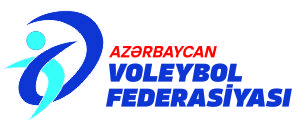Volleyball rules
Game rules, pitch, volleyball court dimensions
We can accept a volleyball court with a rectangle measuring 18x9 m. So, he was divided into two 9-meter team fields with a net in the middle. The 18-meter-long field is 9 meters wide. If the width of the net is 1 meter, the length of the antenna on both sides is 180 centimeters. These antennas and their edges are considered outside the pitch.
Thus, if the ball passes over the edge of the antenna, the place where the ball is expected to fall (even if the ball hits the opponent's court's points area is not counted) is hit. The accepted thickness of the antenna is 10 mm. The height of the net is 2.43 m for men and 2.24 m for women. This height is measured by the referees with any measuring device from the center line of the pitch. The poles to which the net is connected have a height of 2.55. Their appearance is straight and round. The poles were placed at a distance of 0.50 m and 1 m from the two side lines. At the same time, it is against the rules to wire the poles to the ground.
Basic rules and general concept.
Volleyball is a team sport played with 6 players. In volleyball, the game must start with service. The service must be performed for a maximum of eight seconds. The start of the game is selected by the referee by lot. In each new set, the teams' positions on the field and the side where the service starts change. In the fifth set, the side that starts the game by lot is chosen again. The party initiating the service is the protected party. Because, if the service is well received, the party that will build the game will be the other side. Generally, the attacking side can touch the ball a maximum of three, at least once. Since the block is not considered a touch, it is possible to play with the ball 4 times. A player can touch the ball only once in an attack. Two consecutive touches are considered a penalty and add one point to the opponent's asset. It is also allowed to touch the feet in difficult moments in volleyball. When the ball hits the net, the game does not stop, the situation continues in the same direction in which the ball hits the net. For example, if the ball hits the net and you hit the ball a maximum of three times, then there is no chance to play with the ball again. When a player touches the net, the match is stopped, the opponent is given a point and a service. In general, each won rally gives one point and one service to the teams. That is, after gaining points, the game stops and the winning side enters the game with a service. When the referee shows a yellow card to one of the players, the opposing team is given a point, and if the team that started the service receives a yellow card, it loses this right. When a red card is shown, the player leaves the field from that set and the players change positions one clockwise.
In volleyball, there is also a break between sets. During this break, players prepare for another set and rest. During the game, except for the fifth set, there is a term in each set called "technical time-out". These technical time-outs, which act as a break for the players, occur twice in each set - when one of the teams scores 8 and 16 points. One-minute technical time-outs are not in the fifth set. Instead, in the fifth set, when one of the sides scores 8 points, the teams change places on the field. In addition, head coaches can take a timeout in any set. This time-out chance is given to each team twice in each set and once in the fifth set. Coach timeouts, like technical timeouts, provide a minute of rest and consultation with the head coach. Coaches often use these chances at critical moments to gather their team when the opponent scores a lot in a row.
It should be noted that in recent years, technical time-outs have been abolished in some competitions
During these breaks, technicians clear the pitch to keep it from getting wet.
© 2022 AFV. Bütün hüquqlar qorunur.

